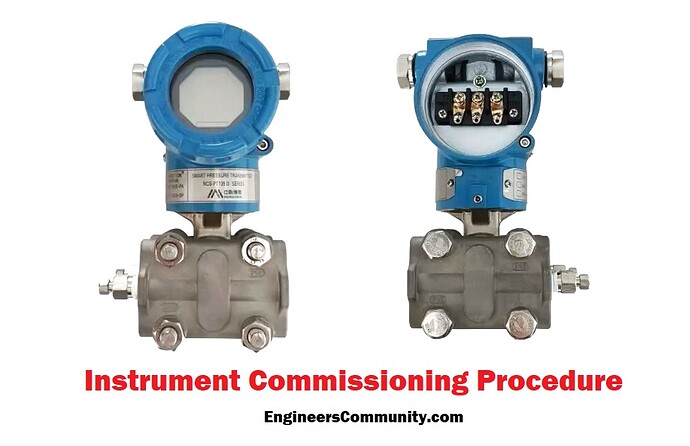Instrument Commissioning procedures entail all the activities required to validate and verify that all the instruments are installed correctly, safely, and can be operated as per their design intent.
Instrument Commissioning Steps
Here is a general step-by-step procedure of instrument commissioning:
-
Verification of Documentation: Ensure that all necessary documentation is in place, including manuals, data sheets, diagrams, and certificates. Confirm that these documents match the installed instruments.
-
Physical Inspection: This involves checking the physical installation of the instrument. Ensure the instrument is installed correctly, securely fastened, and in the right location as per the Instrument Location Layout. Check for any physical damage.
-
Cabling Check: Inspect the cabling of the instruments. Ensure the cables are well-terminated, correctly labeled, and free from any damage. The cables should be secured and run according to the design.
-
Loop Checking: Conduct loop checks to confirm the continuity and integrity of the control and communication loops. The test ensures that the right instrument is connected to the right input/output module at the control system end.
-
Alarm and Trip Setting: Check and verify that alarm and trip settings are as per the design requirement.
-
Calibration: Conduct a calibration check of the instruments against a known standard to verify their reading accuracy.
-
Functional Testing: Functional testing verifies that the instrument operates as expected. It tests the complete operational range and response of the instrument.
-
Communication Testing: Check the communication of the field instruments with the control system. Verify the right data is received and displayed on the control system.
-
Documentation of Results: Document all the results from the commissioning checks and tests. This includes any issues or faults found, their cause, and the corrective action taken.
-
Final Verification: Upon completing the tests, perform a final review to ensure that all checks have been completed and documented.
It’s important to remember that this is a generic procedure and might not cover all aspects required for your specific project. Always refer to your project-specific commissioning and commissioning procedure documents.
Please remember that the process should be carried out by qualified personnel, following all necessary safety protocols, and complying with all relevant standards and regulations.
